Page 2 of 4
Re: August 2018
Posted: Sun Aug 12, 2018 8:19 pm
by Allan.W.
The weather today at a very busy Dungeness (something on at the lifeboat station) , a few butterflies still on the wing but all looking rather worse for wear now. Managed to find five battle worn Small Coppers ,this one being the best ! a few worn Common Blues and Brown Args ;
one Small Heath ,and some Gatekeepers and Meadow Browns ,which were actually in pretty fine fettle.
Best find was an egg laying (on Bedstraw ) Hummingbird Hawk, not seen so many this year ,one early morning visit last season
produced sixteen !
Regards Allan.W.
Re: August 2018
Posted: Mon Aug 13, 2018 8:24 am
by peterc
Following on from my discovery of Small Copper eggs in my garden on 5 August, I looked around for larvae this morning. At least half the eggs now have hatched so I was hopeful. I found one larva under one sorrel leaf constructing a 'groove' - transparent from above as the first photo below shows.
ATB
Peter
Re: August 2018
Posted: Mon Aug 13, 2018 9:44 pm
by David M
Great stuff, Peter. Do you intend to keep an eye on them to see how they develop?
Re: August 2018
Posted: Tue Aug 14, 2018 6:17 am
by peterc
David M wrote:Great stuff, Peter. Do you intend to keep an eye on them to see how they develop?
Thanks for your kind comment, David.
I certainly will keep an eye on the eggs and the larvae. All being well, adults should emerge in September. I'll have to be careful when I next mow the lawn, which I haven't done since May

.
ATB
Peter
Re: August 2018
Posted: Tue Aug 14, 2018 7:03 pm
by Wolfson
2018 continues to deliver. Within a few hours on the North Norfolk coast today I saw well over 100 Walk Brown. Of the 18 species seen this was only exceeded by the numbers of Common Blue and Brown Argus. A nice late season treat.
Re: August 2018
Posted: Tue Aug 14, 2018 8:38 pm
by Allan.W.
A day off today ,so decided to have an early morning visit to a local Adonis site near Wye (Kent ) plenty on the wing
along with numerous Common Blues and brown Argus ,amongst the Adonis I found a female ,with the forewing upperside spot ringed in white (which I have seen before ) but this individual also showed a white spot on the hindwings as well ,which I haven,t seen before .
Large numbers of males about ,with two showing spots at the base of the forewings. Also found three worn male Wall Browns.
Later we visited Samphire ho ! hoping for some second brood Adonis ,but not a one ! again good numbers of Common Blues ,a few walls
A Painted Lady ,a Hummingbird Hawk and in a fifty metre stretch of the raised concrete path ,ten Wasp Spiders !
We met one of the wardens doing his butterfly count ,and he told us that a few days back he had a record site count of Common Blues 439 !
Regards Allan.W.
Re: August 2018
Posted: Tue Aug 14, 2018 9:15 pm
by Vince Massimo
On 6th August I saw a Comma laying eggs on the potted nettle in my Crawley garden. Today they all hatched and I counted 9 larvae on the undersides of the leaves.
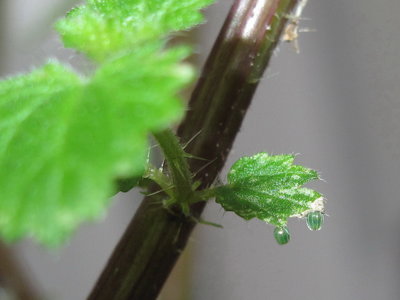
- Comma eggs - Crawley, Sussex 12-Aug-2018
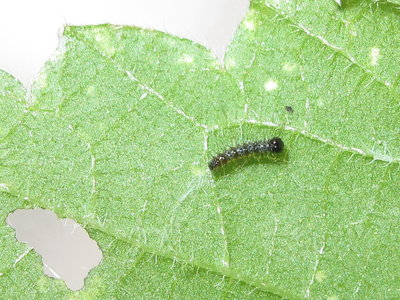
- Comma larva (1st instar) - Crawley, Sussex 14-Aug-2018
Fairing less well are my Large White eggs. Despite hundreds being laid, there are no larvae. Any larva that hatches seems to be taken by wasps. Many eggs have been predated by slugs, but it was unusual to see a Harlequin ladybird also taking an interest. It did not eat all of the eggs and I suspect that it was scavenging from ones that had already been damaged by previous predators.
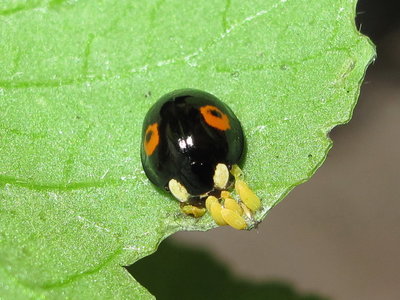
- Large White eggs and Harlequin ladybird - Crawley, Sussex 14-Aug-2018
A walk in woods near Gatwick Airport today produced two Orange-tip pupae on Garlic Mustard stems situated in shady conditions.
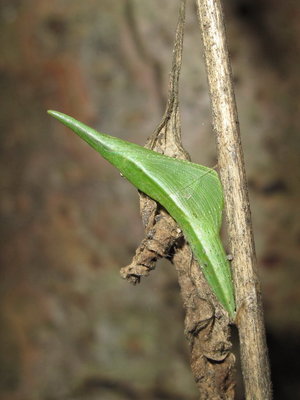
- Orange-tip pupa - Gatwick, Sussex 14-Aug-2018
Both were green and stood out against the parched ground and dead stems.
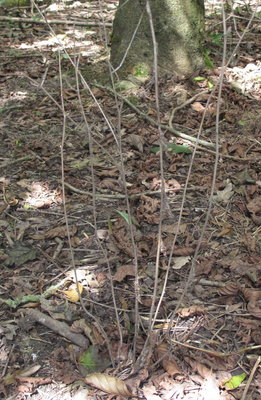
- Orange-tip pupa - Gatwick, Sussex 14-Aug-2018
Vince
Re: August 2018
Posted: Wed Aug 15, 2018 6:47 pm
by NickMorgan
There are still plenty of butterflies flying around East Lothian despite the recent cloud and rain. I was lucky with today's transect with the sun staying out most of the time.
7 Large Whites, 36 Small Whites, 18 Green-veined Whites, 4 Small Coppers, 4 Peacocks, 2 Commas and 7 Speckled Woods.
I walked back a different route and on a patch of mint at a sheltered spot I saw 1 Large White, 7 Small Whites, 1 Green-veined White, 7 Small Coppers, 4 Peacocks, 2 Commas, 2 Wall Browns and a Painted Lady. The reason that I saw so many butterflies at this spot was because one of the Small Coppers was cream, rather than orange. I spent ages trying to track it down and get a picture with my phone and kept spotting other butterflies!
The picture isn't very good, but at least it is a record of what I saw. I wonder if this is the
schmidtii aberration?
Re: August 2018
Posted: Thu Aug 16, 2018 5:45 pm
by Jack Harrison
Surprise here in north Scotland today. A Small Copper indoors on the window pane. I had previously only seen them (in this area) on coastal dunes.
Scotch Argus fading fast.
Jack
Re: August 2018
Posted: Fri Aug 17, 2018 4:05 pm
by Jack Harrison
One of my captive Large Whites (a female) emerged today, 17th August. It was allowed to warm up and then released: it flew off strongly.
I cannot say whether this is 2nd or 3rd generation of the year. From almost fully-grown larva found at end of July.
Jack
Re: August 2018
Posted: Fri Aug 17, 2018 4:26 pm
by peterc
I've seen few Commas so far this summer but I saw a beautiful dark individual on my local patch this morning. Perhaps numbers will pick up soon.
ATB
Peter
Re: August 2018
Posted: Fri Aug 17, 2018 5:56 pm
by Allan.W.
That's a very interesting Small Copper you,ve posted there Nick (Morgan ) a beautiful insect ,and a really good find,
apart from the nicked wing ,it looks in pretty fresh condition ,so probably rules out a warn (faded ) specimen , I believe that AB; Schmiddti is generally ,Silvery /White ground colour ( see the Abberations photos on this site ) ,as we all know Small Coppers are very variable ,and pale individuals do turn up fairly regularly ,especially where there is a large population (as at Dungeness ,Kent ) ,that said yours is as close as dammit !
another pale AB; is AB;Cuprinus . I,ve been lucky enough to have found two very pale Coppers ,but not as pale as yours ! Once again terrific find !
Regards Allan.W.
Re: August 2018
Posted: Fri Aug 17, 2018 8:37 pm
by David M
Disappointing butterfly numbers yesterday at West Williamston in Pembrokeshire.
A mere 4 Hedge Browns were recorded, with the commonest species being Common Blue (25-35) and Small White (15-20).
Just one female Brown Hairstreak seen:
Other species seen in single figures were: Silver Washed Fritillary, Red Admiral, Painted Lady, Meadow Brown, Small Copper, Large White, Green Veined White & Speckled Wood.
Re: August 2018
Posted: Sun Aug 19, 2018 6:59 am
by Jack Harrison
Vince: A walk in woods near Gatwick Airport today produced two Orange-tip pupae on Garlic Mustard stems situated in shady conditions.
I had read somewhere that Orange Tip pupae had never been found in the wild.
Whether that was true or not, you have put that one to bed Vince. Excellent observation.
Jack
Re: August 2018
Posted: Sun Aug 19, 2018 9:09 am
by Vince Massimo
Hi Jack,
Orange-tip pupae are not easy to find in the wild (I have only ever seen 4, including one in my garden), but diligence does pay off. One clue for looking for them on Garlic Mustard is to check for feeding damage on the seedpods at the top of the plant. If they have been neatly shortened, then a larva has been there. However, it may then have been predated or moved elsewhere to pupate.
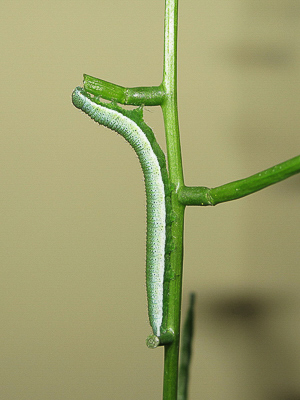
- Orange-tip larval feeding damage
I think that it's Peacock pupae that are pretty much impossible to find in the wild.
Vince
Re: August 2018
Posted: Sun Aug 19, 2018 2:45 pm
by Jack Harrison
Orange tip eggs are very easy to find. Caterpillars moderately easy (although very easy to collect by accident). Chrysalises are a challenge. I might check on a site (by the recycling centre) where there were plenty of caterpillars earlier and now masses of dried garlic mustard stems/pods.
Jack
Re: August 2018
Posted: Sun Aug 19, 2018 7:48 pm
by Testudo Man
Still several freshly emerged butterflies on the wing, as well as the worn out ones hanging on.
A trip to Queensdown Warren, in Kent(yesterday afternoon) saw good numbers of Brown Argus, Common Blues, Adonis Blues(both male, female an various sizes of males!!). Chalk hill Blues are now thin on the ground, but a couple of fresh Females were seen...and i also saw another female ab.
Had an interesting day on the 17/8/18!...Before i set off for work, a Humming Bird Hawk Moth was buzzing around my front garden(its the 2nd day i had seen it) I failed to take any decent photos of it, but i did see it egg laying in my garden. So i did manage a photo of the egg!
On the way home from work, dropped into my usual Adder site, no sign of any snakes, but i did see my 1st Clouded yellow of the year...she was egg laying too!...Several images, cheers Paul.
The Humming Bird Hawk Moth Egg. Image is not cropped, and if you look close(lower right hand corner of the unopened flower) it looks like some creature has laid a much much smaller orange egg?!
Perfect fresh male Adonis Blue(full size specimen) at sunset, shot from back on the 6/8/18. Darland Banks, Kent.
The same Male Adonis, on a previous perch. Image is not cropped. This area is a steep embankment.
A couple of images from yesterday.
Female Chalk hill Blue. Image is not cropped.
These last 2 images show different sizes of the male Adonis Blues I saw. Ist image is of a small male, the 2nd image is of an even smaller male than that! So Im saying 3 different sizes of Male Adonis Blues seen on the day.
Re: August 2018
Posted: Mon Aug 20, 2018 7:53 pm
by David M
Beautiful images, Testudo Man. Sad that other species seem to be on the wane but Adonis should be okay for a week or two yet.

Re: August 2018
Posted: Mon Aug 20, 2018 7:53 pm
by millerd
A Wanderer...
Reasonably fresh male Chalkhill Blue seen today at Bookham Commons, Surrey - off the chalk and 7km due north of Denbies Hillside, which is probably the nearest colony...
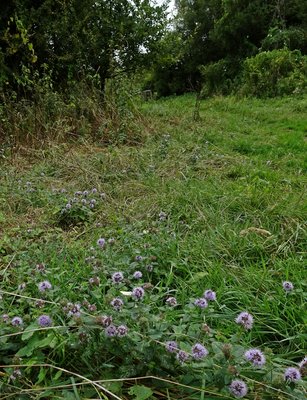
- the butterfly is visible in the foreground
Almost all the Chalkhills seen later at Denbies were much more worn than this one. There were plenty of fresh Adonis, though.
Dave
Re: August 2018
Posted: Wed Aug 22, 2018 11:19 am
by petesmith
In the central Lincolnshire Limewoods it has been relatively quiet over the past week or so in terms of overall butterfly numbers, but there has still been plenty of interest to see.
The butterfly of the moment must be the Speckled Wood, which is out and about in very strong numbers.
Brown Argus has also undergone something of a population explosion, and is far commoner than usual in a number of woods in the area.
Brown Hairstreak emerged extremely early for this part of the world, and has been on the wing for several weeks already. This female posed for me on Monday of this week:
All three Pierids are common at the moment, especially Green-veined, and I am seeing some rather small examples, a sure sign of the effect of the prolonged hot spell on the quality and availability of larval foodplants. Difficult to tell from the photo, but the Small White below was no larger than your average Small heath!
And following on from a superb season for both Purple Emperor and White Admiral, it has been nice to find the early stages.
Below is Tyrion the Emperor larva, now just into his 2nd instar. He is ten days old, and the remains of his egg is still just visible, although he abandoned the leaf upon which he was laid immediately after hatching, and has since relocated twice.
Two weeks ago I was finding White Admiral eggs, as well as mainly 1st and 2nd instar larvae.
This week, I am finding hardly anything but empty piers, and the occasional freshly made hibernaculum. Mid-August seems pretty early for the bulk of the surviving larvae to be already settling down for the winter! Predation rates as usual are running very high amongst the young larvae. I suspect spiders are the main predators at the moment, as much of the honeysuckle that I search seems to have a resident arachnid lurking somewhere!